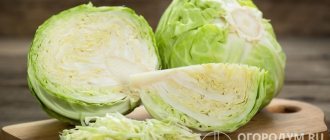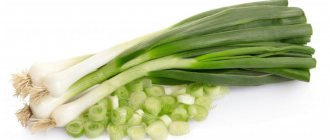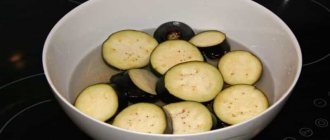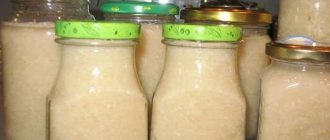Gooseberries contain vitamins, minerals, fruit acids, and essential oils. Berries strengthen the immune system, protect against colds, and prevent the negative effects of free radicals on the body. Gooseberry lovers are less likely to suffer from dangerous diseases such as diabetes, Alzheimer's and Parkinson's diseases, and heart and vascular pathologies.
If fresh gooseberries are available in the summer, then in the cold season you should eat them frozen. To preserve their taste and valuable substances for the body, it is important to know how to properly freeze gooseberries for the winter in the freezer at home. If stored incorrectly, the product not only becomes useless, but can also be harmful to health.
Freezing methods and preparation
There are several ways to freeze gooseberries for the winter in the refrigerator:
- Entirely.
- In the form of puree.
- In syrup.
Sweet varieties with thick skin are suitable for harvesting entirely. Thin-skinned gooseberries are best frozen as puree or syrup.
Regardless of the freezing method, the berries must be carefully sorted, various debris and spoiled fruits must be removed. Unripe specimens are also not suitable - they are tasteless, and they contain few useful substances. There is no need to cut off the tails of gooseberries intended for freezing whole.
Then the berries need to be poured into a colander and rinsed thoroughly under running water. After this, let the water drain as much as possible and transfer them to a cotton towel in one layer so that they dry completely, otherwise they will form an ice lump.
The process of drying berries before freezing should not be ignored.
You need to prepare trays, trays or boards for freezing and containers or bags for further storage in advance. It is also necessary to free up space in the freezer where trays of berries will be placed.
Is it possible to freeze gooseberries?
The best method for preserving gooseberries for the winter is freezing in the freezer. The berries are ideal for freezing, as they contain pectin, which maintains the tense state of the shells and prevents water from penetrating into plant cells.
Over 1000 varieties of gooseberries have been bred, differing in taste, size, color of berries, chemical composition, purpose, and fruiting. All these properties must be taken into account when choosing a product to prepare for the winter. The varieties with thick skin and sweet pulp are most suitable for freezing: Yubileiny, Date, Rodnik, Serenade, Kolobok, Kazachok, White Nights, Harlequin, Aristocrat.
The advantages and disadvantages of frozen gooseberries are listed in the table.
| Advantages | Flaws |
| Increased shelf life. Depending on the temperature conditions and technical characteristics of the freezer, gooseberries are stored from 3 months to 2 years. | Slight change in taste. |
| Preserving the freshness and appearance of berries. | The likelihood of damage to packaging for storing products under the influence of low temperatures, which leads to a loss of organoleptic properties of the product. |
| Minimal loss of vitamins, micro- and macroelements valuable for the body in the composition of the fruit. | The duration of defrosting takes on average 10-18 hours. |
| Preparation does not require much time, additional financial expenses, or special culinary skills. | Berries can absorb extraneous unpleasant odors. |
| Creating optimal storage conditions for perishable varieties, reducing the amount of waste. | With a large harvest, the volume of frozen products is limited by the size of the freezer. |
| Possibility to eat fresh fruits in the off-season. |
Whole berries
Freezing whole gooseberries is a quick and easy way to preserve the fruits in the freezer for the winter. It can be prepared in bulk without sugar or sprinkled with granulated sugar first.
Bulk without sugar
After defrosting, whole berries practically retain their original appearance and remain quite tasty, almost like fresh.
BJU and calorie content of frozen whole gooseberries without sugar per 100 g of product are:
| Squirrels | 0.88 g |
| Fats | 0.58 g |
| Carbohydrates | 10 g |
| Calorie content | 44 kcal |
For this method, it is necessary to select ripe, but strong, not overripe or damaged fruits with tails
Procedure:
- Prepare everything you need for freezing: clean dry berries, trays or pans, parchment, bags or containers.
- Line trays or trays with parchment.
- Arrange the berries on trays in one layer.
- Place them in the freezer. Freeze for at least four hours.
- Remove the trays from the freezer and transfer the berries to containers with lids or bags. Use a wooden spoon for this. It is better not to touch the berries with your hands.
- Sign containers or bags - indicate the contents and date of freezing.
- Place the gooseberries in the freezer for permanent storage.
How to freeze whole gooseberries
The most popular method is freezing whole berries. The washed and dried raw materials are placed in one layer on a tray or tray covered with parchment paper, and then placed in the freezer for 2-4 hours. The frozen fruits are transferred to bags or containers and sent back to the freezing compartment. The product prepared in this way can be stored for a year.
When placing in containers, it is important to remember that the cell sap turns into ice during the freezing process, increasing the volume of the product by approximately 10%
Whole berries after defrosting retain their beautiful appearance and high taste. They can be used to decorate desserts, prepare fruit drinks, yoghurts, pies and other baked goods.
In syrup
After defrosting, this product is immediately ready for use. For this method, you can take berries that are overripe and slightly bruised, but in no case rotten or moldy.
What you need to prepare:
- berries;
- water;
- granulated sugar;
- containers with tight lids.
For 1 liter of water you need to take 500 g of sugar (that is, the proportion is 2:1).
Procedure:
How to make gooseberry jam
- Boil the syrup in a saucepan: pour water, add sugar, put on the stove, wait for it to boil. Once it starts boiling, cook for a few minutes until the syrup is quite thick.
- Allow the prepared sugar syrup to cool completely.
- Wash and dry the berries, then trim the stems.
- Distribute the gooseberries among containers, not adding to the top.
- Pour the cold syrup over the berries and place them in the freezer, uncovered.
- Freeze for two days, then close tightly and put in the freezer for permanent storage.
What berries are suitable for freezing?
For freezing, it is better to choose yellow-green berries of certain varieties. Frozen red gooseberries may become soft after defrosting.
It is recommended to pick the fruits when they are not yet fully ripe. Ripeness can be checked by lightly pressing the berry with your fingers: it should be moderately elastic. If you prefer a sweeter berry without pronounced sourness, wait until it is fully ripe. Harvest in sunny, dry weather in the morning.
| On a note. It is not recommended to freeze berries immediately after picking them. Keep them in the refrigerator at negative temperatures for a couple of days, then the berries will harden a little and will not soften after defrosting. |
As a puree
Overripe and slightly bruised fruits without signs of spoilage are also suitable for puree.
What you need to prepare (the number of ingredients can be any):
- 1 gooseberry;
- 400 g sugar.
Advice. If the gooseberries are sour, the amount of granulated sugar can be increased to your taste.
It is recommended to use a wooden masher to mash the berries. It is believed that metal in intense contact with berries worsens their taste
Procedure:
- After washing and drying the gooseberries, you need to cut off the tails.
- Then place them in a large bowl and puree them using a potato masher. It is better to use wood rather than metal. You can pass the puree through a sieve so that there are no grains or skins in it.
- Add sugar to the prepared puree and mix thoroughly until the grains of sand are completely dissolved.
- Place the puree into containers in small portions and place first in the refrigerator.
- When cool, cover and freeze in the freezer.
Gooseberry puree can be frozen without sugar, then the preparation will be more healthy.
Gooseberry puree for the winter
If you want to surprise your guests in winter, invite them to try fresh gooseberry puree rather than jam. You can use overripe soft fruits and sweet varieties with thin skin. After washing the berries well, carefully cut off the stems and remaining flowers. The raw materials are placed in a spacious container and kneaded to a puree state. An important condition for maximizing the preservation of vitamins in the puree is to prevent oxidation of the berries upon contact with metal. Therefore, some housewives grind them not in a blender or meat grinder, but using an ordinary wooden masher (as in the photo).
To achieve a uniform consistency, the berry mass is additionally ground through a sieve.
For 1 kg of finished puree take 350-400 g of sugar. Its amount can be increased if the fruits are too sour. After mixing, the mass is placed in a clean container and cooled in the refrigerator for 1 hour. Then the cooled containers are tightly closed with lids and placed in the freezer.
Berry preparations do not tolerate re-freezing, so they are packaged in small portions designed for one use
Assorted berries
Gooseberries in the form of puree can be frozen along with other berries that grew in the garden - black currants, strawberries, cool currants.
Ingredients:
- 1 kg berry puree;
- 10 tablespoons of granulated sugar (the amount can be increased or decreased to taste.
Procedure:
- The berries need to be sorted, all debris removed, washed, and dried on a towel.
- Then transfer to a suitable container and puree with an immersion blender.
- The prepared mass must be weighed to determine the amount of sugar.
- Add sugar to the berry puree and mix thoroughly.
- You can add several whole gooseberries and sliced strawberries to the resulting mixture.
- Let the mixture sit for one hour.
- Place the berry puree in silicone molds and place in the freezer.
- When it hardens, remove it from the cells, put it in bags and store it in the freezer.
After defrosting, the product can be served with cheesecakes and pancakes, and can also be given to children as a dessert.
What can you cook from frozen gooseberries?
We offer several original recipes that will help diversify your daily menu:
Refreshing ice cream
Homemade gooseberry fruit ice will surely delight both children and adults. It’s not difficult to prepare – you just need the berries themselves, sugar and a few mint leaves.
Preparation:
- Pour a small amount of cold water over the gooseberries, add mint leaves and heat until the berries are soft.
- Beat into a homogeneous mass using a blender.
- Pass through a sieve, thus removing seeds and skin.
- Boil sugar syrup (to taste), cool it and add to the pureed berries.
- Stir and pour the finished mixture into ice cream molds or other suitable containers and place in the freezer.
- As the mass hardens, stick sticks into it.
You can use regular shot glasses or small disposable cups as molds.
The dessert has a delicate, sweet and sour taste with a hint of mint and a delicate texture that simply melts in your mouth.
Smoothie
Thanks to its sweet and sour taste, gooseberries go well not only with fruit and berry components, but also with vegetables, which opens up scope for a variety of experiments. To prepare a smoothie, pour berries, pieces of fruit or vegetables into a blender, add juice or milk and beat until smooth. To make the taste even brighter and richer, you can add nuts or seeds.
Spicy seasoning for meat and fish
Even novice cooks can easily prepare a tasty and aromatic seasoning based on frozen gooseberries. For 1 kg of berries, take 500 g of garlic and 200 g of parsley and dill, pass through a meat grinder, and salt to taste. If desired, you can add chili pepper, cilantro, mint, lemon (along with zest). The mixture is placed in jars, placed in the refrigerator and allowed to brew for 3 hours. The shelf life of this sauce is no more than a week, but it can be slightly increased by boiling for 3-5 minutes.
The seasoning has a sweet and sour taste and pronounced spiciness, ideally combined with meat or fish dishes.
With orange
What you need to take:
- 2 kg gooseberries;
- 1.5 kg of oranges;
- 2.5 kg of sugar.
Gooseberries with orange are not only a tasty treat, but also a real vitamin bomb
Procedure:
- Wash the oranges, do not peel them. Cut each fruit into slices and be sure to remove the seeds.
- Place clean dry gooseberries and orange slices into a blender and grind them until pureed. You can do this using a meat grinder or food processor.
- Transfer the resulting mixture to a large bowl and add sugar. Mix thoroughly and let stand for a while until the sugar is completely dissolved.
- To freeze the mixture, prepare plastic bottles or containers. You can also use plastic bags for freezing food. Containers for workpieces must be clean and dry.
- Transfer the mixture into containers for freezing and storage, and place in the freezer.
Preparing gooseberries for freezing at home
The first step is to sort through the collected berries, weed out spoiled and rotten fruits, as well as small insects that could get into the container with the harvest. In this case you should:
- Trim branches and remove excess leaves of plants;
- Rinse the selected berries under cold water;
- Using a colander, remove excess moisture;
- Place the fruits to dry.
You should not freeze wet gooseberries: they will turn into ice in the freezer. It is recommended to store the culture in the freezer at a temperature no higher than -18 degrees.
Photo pixabay/Nagaswetha: peeled gooseberries, prepared for freezing.
Useful tips
Tip 1
To freeze berries, you need to choose plastic containers or plastic bags. Glass containers are not suitable as they may burst due to low temperatures. Plastic containers and bags must be clean, undamaged and tightly closed.
Tip 2
When freezing berries, it is not recommended to place them next to foods such as fish and meat, otherwise they may acquire an unpleasant odor.
Tip 3
Containers with products must be signed before being sent to the freezer. You should indicate not only the date of harvesting, but also the name of the fruit. The fact is that when frozen, gooseberries can be confused with other berries, especially red fruits.
How to defrost gooseberries correctly
You should not defrost gooseberries at room temperature or in a microwave oven, as in such conditions there is a high probability that the berries will turn into a tasteless mush.
Defrosting is best done in the refrigerator on the bottom shelf. The process is long, takes at least 8-10 hours, but is the most optimal in terms of health safety and preservation of the beneficial and taste qualities of gooseberries. If you need to defrost the berries as soon as possible, you can fill them with warm water and immediately use them for cooking.
FAQ
What to cook from frozen gooseberries? From frozen berries you can make compotes, fruit drinks, jelly, smoothies, yoghurts, jellies, popsicles, hot sauces for meat, jam, filling for pies and other baked goods.
You can quickly and easily make a delicate smoothie from frozen gooseberries. In addition to berries, you will need a banana, which will soften the taste, seeds, poppy seeds or nuts, milk or juice. Place the gooseberries in a blender bowl, add the banana cut into pieces, pour in milk or juice. Beat with a blender until smooth and fluffy. For taste, add seeds, poppy seeds or nuts. You can also add a spoon of honey.
A delicious and healthy gooseberry and banana smoothie can be prepared in just five minutes.
How long to store? At a temperature of about -20 degrees, gooseberries, frozen whole without sugar, can be stored for up to one year. If the temperature is not lower than –8 degrees, the berries will last no more than 3 months without loss of quality. Fruits prepared as puree in closed plastic containers can be stored for up to 6 months.
Shelf life
How long gooseberries can be stored in the freezer depends on the temperature. If the freezing temperature is about −18°C, the shelf life is six months. With low-temperature storage, you can get a huge supply of time and store the berries for 24 months.
Advice. If the refrigerator operates intermittently or is not able to maintain a constant temperature, it is better not to risk it and keep it frozen for no more than 3 months. The product must not be re-frozen.
Reviews
Marina, Moscow Previously, I didn’t know what to do with gooseberries - no one eats jam. Recently I started freezing it, like other berries. It is ideal for freezing because it is dense. In winter, I cook compotes from it along with other berries and make jelly.
Anna, Tula I don’t know whether it’s possible to freeze gooseberries for the winter or not, but I decided to freeze them whole. At first I didn’t know what to do with this preparation, but one day I came across a recipe for sauce for meat and now I cook it all the time. My sour gooseberries are perfect for this recipe.
Zhenya, St. Petersburg We don’t really like gooseberries. So that the goodness does not go to waste, I freeze it and throughout the winter I gradually add other berries and fruits to compotes. Recently a new recipe for compote made from gooseberries, lime or lemon wedges and a sprig of mint has appeared. I even make this refreshing drink for guests – it turns out quite tasty.
Storage and defrosting rules
To maintain the proper quality of products, you should follow the rules for storing and defrosting them before use:
- freezing of berries should take place quickly, in small portions;
- the optimal temperature for storing food for 10 months is about -20 ⁰C;
- the “deep freezing” function of the freezer is turned on a day before use;
- Frozen gooseberries should not be placed next to meat or fish products so that they do not develop an unpleasant odor;
- You should not fill the boxes and chambers completely, since when frozen, the volume of berries increases by no less than 10% of the original;
- defrosting is carried out gradually, for which the container is transferred to the bottom shelf of the refrigerator;
- after defrosting, the product must be consumed; re-freezing is unacceptable;
- compotes, jelly, can be prepared immediately after the container is removed from the freezer.











